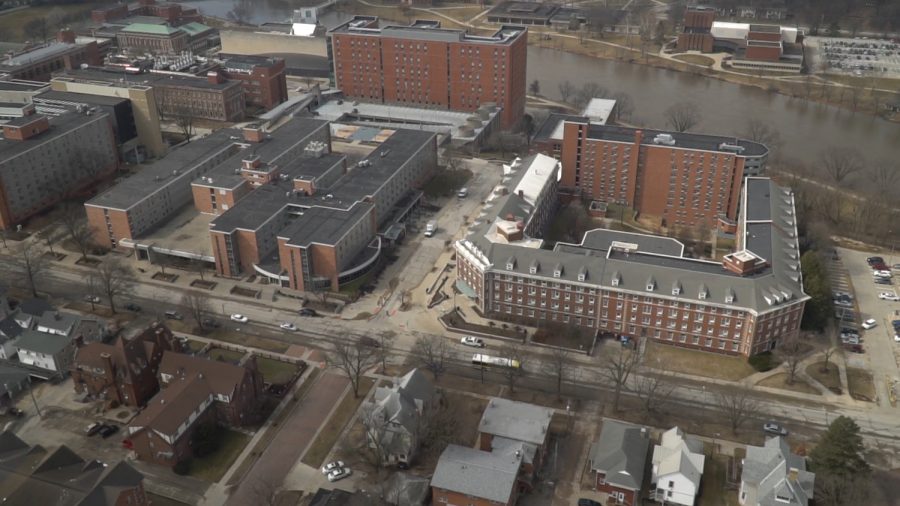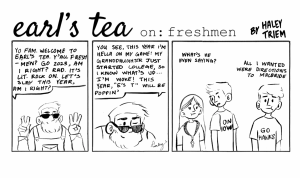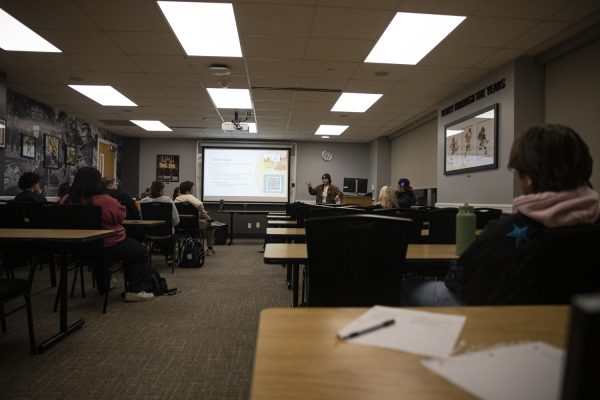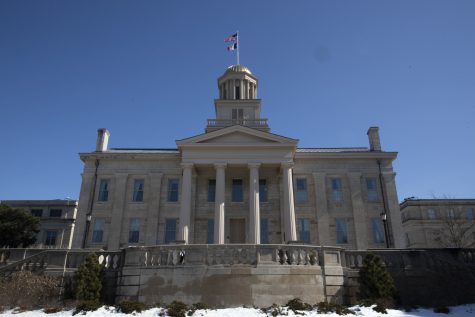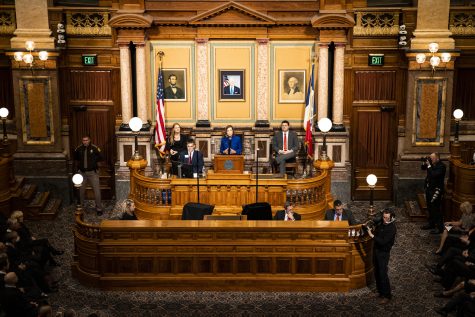Editorial: UI needs ‘creative’ solution to housing more students
Poor planning from the UI seems to have led to expanded housing in residence halls, an unfair situation for on-campus students.
Currier Hall as seen from the UIHC Aircare helicoptor on March 20, 2019 in Iowa City, Iowa.
August 29, 2019
Some students seeking a comfortable living arrangement in the residence halls have been duped.
UI President Bruce Harreld told the state Board of Regents that officials were “creatively looking” to find space to house the larger-than-expected first-year student population — and housing students in crowded lounges again was the “creative” solution.
This isn’t just a bureaucratic shortcoming. It’s not just annoying or less-than ideal. This is a failure of University Housing to provide reasonable living space for students who live on-campus.
Senior Director of UI Housing & Dining Von Stange told The Daily Iowan that around 6,400 students are expected to live in the residence halls. The university had previously reported to the regents a fall residence-hall occupancy of 6,200 students.
Our fellow Hawkeyes currently in expanded housing do not deserve to be treated in this manner. It seems unlikely that, if given the choice between living in a common space with no privacy and finding their own — often cheaper — arrangements off-campus, students would elect the former option.
Perhaps the most frustrating facet of this situation is that there is no obvious solution. It’s not as if the UI can erect new residence halls instantly. In fact, new residence halls were supposed to solve this issue.
Our fellow Hawkeyes currently in expanded housing do not deserve to be treated in this manner. It seems unlikely that, if given the choice between living in a common space with no privacy and finding their own — often cheaper — arrangements off-campus, students would elect the former option.
Petersen and Catlett Halls were built and opened in 2015 and 2017, respectively, to offer more on-campus housing for students. These were the first new residence halls since 1968. The two shiny, new buildings were supposed to handle the demand for more on-campus rooms, not more lounges where students are expected to camp out.
The combined cost of building Petersen and Catlett was $148 million, according to the UI. All that money spent from housing funds, and the university still fell short of space.
This wasn’t always the problem facing UI Housing. In fact, during the 2018-19 school year, there was a surplus of rooms available in the residence halls. This was because of a reduced number of second-year students and returning students staying in on-campus housing.
However, efforts to get more returning students living in residence halls and an unanticipated enrollment spike — despite the UI’s enrollment-management strategy — seemed to have overcorrected the low housing-retention issue, and now the UI has turned to an old, rather uncreative solution.
Stange said students living in expanded housing are paying $10 per day instead of the typical housing rate — at least some acknowledgement of the unfortunate living situation these students face — and of course, the arrangement is not intended to be permanent. Perhaps this year’s return to expanded housing was the result of a miscalculation, but the DI Editorial Board hopes to see the UI better balance its enrollment and residence-hall population in the future.
Editorials reflect the majority opinion of the DI Editorial Board and not the opinion of the Publisher, Student Publications Inc., or the University of Iowa.
Editorial board members are Marissa Payne, Brooklyn Draisey, Elijah Helton, Marina Jaimes, and Taylor Newby.



